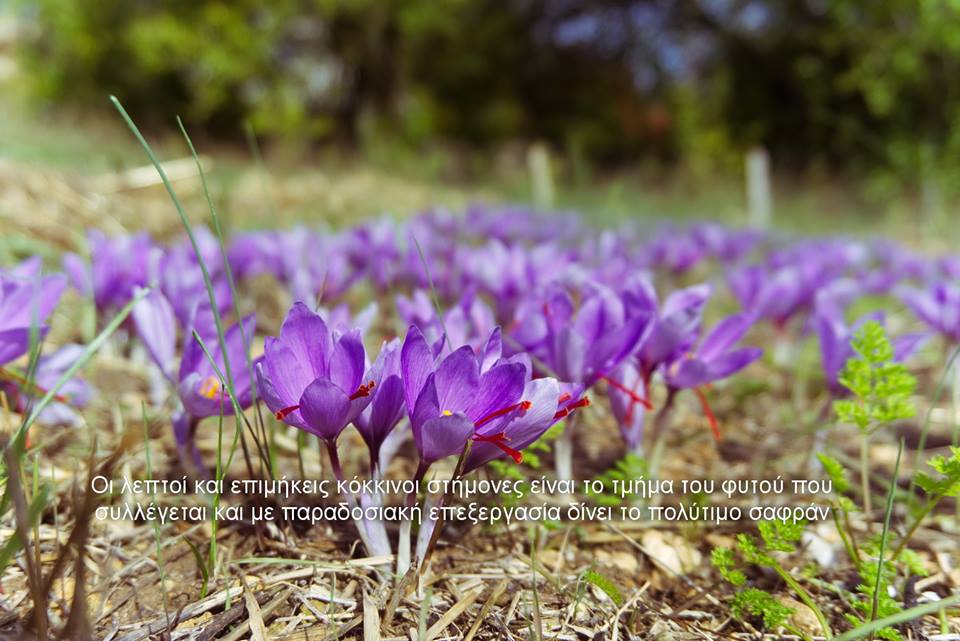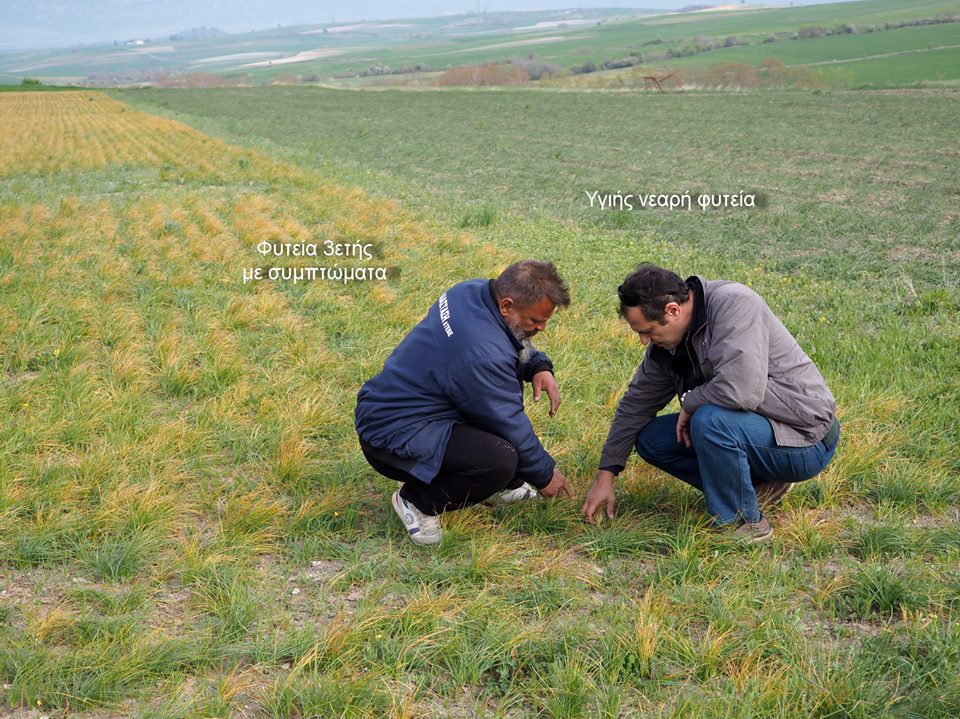Visit to Crocus sativus fields in Kozani, N. Greece

Visit to Crocus sativus fields in Kozani, N. Greece.
For those who are not familiar with the biological cycle of crocus (Crocus sativus – Iridaceae), after the collection of flowers and stamens from mid to late October, plants continue their vegetative development, produce new bulbs and enter dormancy in late spring when the vegetation above ground dries.

A new biological cycle of the plant starts at the beginning of autumn: bulbs re-germinate and new flowers and vegetation appear. The cultivation remains in the field about six years and then crop rotation usually with cereals follows for many years for soil rejuvenation and nutrient replenishment.
In a recent visit to the region of Kozani, after complaints from farmers and on the spot observation in many fields, it was found that saffron farming suffers from a «degeneration» which becomes intense from the 2nd-3rd year of cultivation. In some fields there are «bald» areas where the plants have been destroyed while in many other fields the vegetation is stunted and the foliage has a bright red-yellow discoloration.
Many soil fungi have been reported in the relevant literature which can impact saffron cultivation. One of these pathogens which is most likely responsible for the gradual degeneration and elimination of crocus plants is the fungus Rhizoctonia crocorum which has been identified in the past and was incriminated as the cause for loss of plants in the region of Kozani. Since saffron will go to dormancy soon, Agrocure will follow the phenomenon closely from the next growing season
